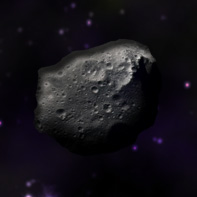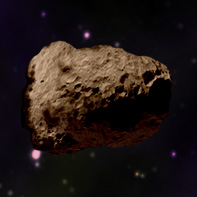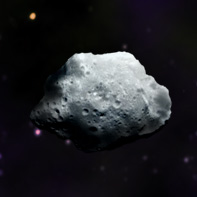Asteroids
Asteroids are chunks of metal and rock much smaller than the planets that orbit the sun. Most of the asteroids in the solar system are found in the asteroid belt a region between the orbits of Mars and Jupiter. It is considered by astronomers that during the formation of the solar system the immense gravitational pull from Jupiter prevented the asteroids from joining together to form a planet.

Asteroids are also known as minor planets. They can range in size from approximately 1000 kilometers in diameter to the size of a stone. The largest asteroid in our solar system is Ceres; with a diameter of about 950 kilometers it is large enough to be considered a dwarf planet. Off the millions of asteroids in our solar system only about 30 have a diameter greater than 200 kilometers. The rest are much smaller, most likely resulting from the collisions of larger asteroids.
Astronomers classify asteroids according to two main criteria, the type of orbit they follow and by the amount of starlight they reflect. By studying the spectrum of colour from the reflected light astronomers can deduce the surface composition of asteroids. Although there are more than twelve categories of asteroids they can be classified as 3 broad types:
- C-type asteroids
- S-type asteroids
- M-type asteroids
Near Earth Asteroids
All the asteroids in the solar system are not restricted to the main asteroid belt. Some pass the sun more closely and thus also pass closely to the Earth’s orbit. Asteroids that pass to within 45 million kilometers of Earth’s orbit are call Near Earth Asteroids. The orbit of some of the steroids cross Earth’s orbit and they could therefore collide with the Earth in the future. One of the theories for the mass extinction of dinosaurs about 65 million years ago is that a large asteroid collided with the Earth causing disruption to the global climate. The Chicxulub crater in the Yucatan Peninsula in Mexico reinforces this theory and the asteroid collision is considered as one of the triggers for mass extinction of dinosaurs. There are several space programs dedicated to identifying, studying and monitoring these asteroids as they can pose a potential hazard to Earth.



